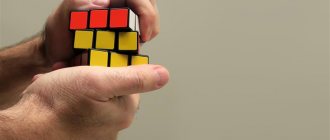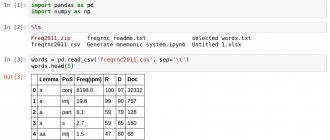Equal breathing (samavritti)
Sit in a comfortable position, keeping your back straight. Start inhaling, silently counting to four, then take a short pause. After this, exhale, also counting to four. Breathe through your nose all the time. If you want to make the practice more challenging, try counting to six or eight. Make sure that all three components (inhalation, pause, exhalation) are the same length.
When to do it
Anywhere, anytime. This technique calms the nervous system and reduces stress. Try practicing it before you go to bed. Especially if you are one of those people who find it difficult to get rid of thoughts about work and problems in the evening. Practice will replace counting sheep and set you up for sleep.
Rules for performing breathing exercises
In order not to harm your health, you should follow a number of rules for performing gymnastics.
When performing any exercise, your back should be straight. A person should lie, stand or sit in the lotus position. Experts in the field of psychology recommend closing your eyes, imagining something pleasant, and meditating while performing breathing practices (that is, thinking only about breathing and nothing else).
At first you will have to make a lot of effort to breathe correctly. After some time, however, a person gets used to it and easily performs the exercises. You need to concentrate on the breathing process even when you don’t have to put in a lot of effort. Otherwise, the techniques will not be effective enough.
During training, you should relax your muscles. This should be done gradually, starting from the toes and ending with the face. Those areas where muscle tension most often forms should be given more attention.
Breathing exercises for stress relief involve 5-10 repetitions of each exercise, which will be discussed further. You need to take a short break between different exercises.
Psychologists advise that when you inhale, imagine how positive energy enters the body (you can also study the Chinese practice of Qigong). As you exhale, negative thoughts, emotions, and feelings should come out. Affirmations will also be beneficial. It is better to choose ones that are aimed at relaxation. Particles “not” and “nor” are prohibited.
Belly breathing
Sit in a comfortable position or lie on the floor. Place one hand on your stomach, the other on your chest, and take a deep breath through your nose. Make sure that the shoulders are relaxed, the chest does not expand, and the diaphragm is working - the muscular partition that separates the chest cavity from the abdominal cavity. When you inhale, it contracts and falls, causing the stomach to protrude forward, and when you exhale, it rises and pushes air out of the lungs.
As you inhale, inflate your stomach, and as you exhale, pull it towards your spine. Try to take 6-10 slow breaths per minute. With such breathing, the body is better saturated with oxygen. Respiratory pattern of diaphragmatic breathing and pilates breathing in COPD subjects. .
When to do it
Before an exam, an interview, and in any stressful situation when you need to quickly calm down. If you want to feel the long-term effect, practice this breathing for 10 minutes every day. For example, immediately after waking up or in the evening before bed. This will have a positive effect on both the cardiovascular The physiological effects of slow breathing in the healthy human. and digestive Diaphragmatic Breathing for GI Patients. systems, and on the general mental The Effect of Diaphragmatic Breathing on Attention, Negative Affect and Stress in Healthy Adults. health.
How to get rid of the feeling of suffocation
The question of how to treat psychogenic dyspnea includes a wide range of methods.
But the main thing is to restore a favorable psychological background. Only nervous calm will help eradicate the disease completely.
You can try to do this on your own.
- Take herbal infusions.
- Set up a daily routine. Sleep – at least 8 hours. Avoid overwork.
- Give up bad habits, as they produce a psychostimulating effect.
- Workout.
- Proper nutrition - more fruits and vegetables, less fatty, salty and spicy foods. It would be good to diversify the menu with products high in magnesium: pumpkin and sunflower seeds, nuts, wheat bran, dates, spinach, cocoa.
- Warm flavored, massage, hardening.
- Breathing exercises – helps to increase the level of CO2 in the blood and reduce the breathing rate.
It happens that neurogenic breathing disorder goes away on its own. For this, a change in the situation was enough, both in a positive and negative direction.
Here is the story of a guy who suffered from nervous shortness of breath for a long time and got rid of it without noticing it. The young man suffered from the disease for 6 years, starting at the age of 15. Attacks of suffocation plagued him so much that he was afraid to go outside for fear of suffocating. After a long examination, a diagnosis was made: “hyperventilation syndrome.”
Upon reaching conscription age, he was drafted into the army (he turned out to be fit). This fact added even more panic. The service was akin to hell. But six months later he suddenly realized that the attacks had subsided. He could finally breathe deeply. There was a feeling that a second wind had opened, and for him it was on the verge of bliss. The disease no longer bothered him.
If you cannot cope with the disease on your own, you will have to resort to the help of specialists and medications.
- Psychotherapy.
- Prescription of sedatives, antidepressants and tranquilizers. Vitamins B, D, magnesium and calcium preparations, as well as beta blockers.
- Special devices that train breathing and help normalize its rhythm. They restore respiratory frequency and relax muscles. Therapy takes place in the form of a game, allowing you to develop self-control, improve your psycho-emotional background, and increase resistance to stress factors.
- Physiotherapy – magnetic therapy, electrophoresis, galvanization, mud therapy.
- Sanatorium-resort holiday.
Nervous shortness of breath, while not a sign of physical pathology, is nevertheless dangerous to health. Its occurrence requires immediate therapeutic intervention to prevent persistent mental disorders and personality changes.
Alternate breathing through the nostrils
Sit in a position that is comfortable for you, keeping your back straight. With your right thumb, close your right nostril and take a deep breath through your left. At the peak of your inhalation, close your left nostril with your ring finger and exhale through your right. Try to fill and empty your lungs to the limit.
Do five of these cycles, then switch nostrils. That is, inhale through the right and exhale through the left. After this, take five inhalations and exhalations through both nostrils. Don't rush or strain, breathe relaxed.
When to do it
When you need to quickly concentrate, cheer up and recharge your batteries. Yogis also believe that this practice develops a state of harmony in a person.
Shining Skull (Kapalabhati)
Inhale and then exhale sharply through your nose, engaging the lower abdomen - the muscles that form its front wall from the lower ribs to the pelvis. They should contract, and the stomach should move inward towards the spine - due to this, exhalation will occur. Try to exhale air in one stream. In this case, the diaphragm should be relaxed both when inhaling and exhaling.
Perform 10 such inhalations and exhalations at a comfortable pace. If you feel dizzy during the process, it means you are putting in too much effort. Take a break and relax.
Please note that this technique has contraindications: active menstruation, pregnancy, high blood pressure, heart problems.
When to do it
The technique is great for helping you wake up and clear your mind. It is good to use in the morning or before training. Plus, practice can become training in itself. Since it actively engages the abdominal region, you will strengthen your abs.
How breathing during stress helps you calm down
The person focuses on breathing. At the same time, he stops thinking about the problem, its significance decreases. It is easier for a person to concentrate on a decision and choose the right words or actions than when emotions are too strong.
Calming also occurs due to physiological factors. When the brain is well supplied with oxygen, blood pressure normalizes and heart rate stabilizes. The level of carbon dioxide in the blood decreases, causing unpleasant symptoms to disappear: dizziness, nausea, increased irritability. Not only carbon dioxide is removed from the lungs, but also “garbage” caught during inhalation, so oxygen starvation does not occur, and the state of health does not become worse, aggravating the condition.
Breathing 4‑7‑8
Find a comfortable position, sitting or lying down, and close your eyes if desired. Press the tip of your tongue to the roof of your mouth, open your mouth slightly and exhale completely. Close your mouth and inhale through your nose, counting to four. Then count to seven, holding your breath the entire time. After this, exhale slowly with a whistle, counting to eight. Repeat the 4-7-8 breathing pattern several times until you feel calm.
When to do it
This technique is a good alternative to equal breathing. Practice it before bed to relax and fall asleep faster. According to the author of the technique, Andrew Weil, the technique will allow you to feel connected to the body, as well as distract from everyday thoughts that prevent you from falling asleep.
How is it detected?
If you experience symptoms of shortness of breath, you should consult a doctor. First of all, he must check whether the symptom is a sign of physical pathology. To do this, the doctor conducts a survey of the patient, and then proceeds to an objective examination: examines and listens to the patient.
To exclude diseases of internal organs, a number of examinations are prescribed:
- radiography;
- allergy tests;
- CT or MRI;
- ECG, ultrasound of the heart;
- UAC.
Without identifying pathology, the doctor sends the patient to a neurologist or psychotherapist.
The psychotherapist collects a psychogenic history, which includes information about the presence of mental disorders, possible traumatic factors, as well as developmental features in childhood.
Psychological analysis involves the study of personality, including through testing. The Nymigen questionnaire is especially effective, being effective in 90% of cases. It was developed by Dutch pulmonologists. Includes 16 positions characterizing the signs of hot water supply. Their severity is assessed within 0-4 points.
During the neurological examination, neurological symptoms are checked and excessive sweating of the palms and feet is determined. Electromyography may be performed.
Additional examinations include hyperventilation test, acid-base blood test, and electrolyte balance. As a rule, with neurogenic shortness of breath, a deficiency of magnesium and calcium in the blood is detected.
Focused Breathing
Take a comfortable position lying down in a quiet, comfortable place. Take a deep, slow breath in through your nose, concentrating on the sensations in the process. Feel your stomach and chest rise. Imagine that the air you breathe is filled with peace and tranquility. Feel that they come to you with him.
Exhale slowly. Imagine that stress and tension are leaving you along with the air. With the next exhalation, add a word that you will concentrate on - for example, “peace.” Continue breathing at this rhythm for 10–20 minutes.
When to do it
In stressful situations, as well as in the evening to relieve tension and get ready for relaxation.
Development mechanism and distinction criteria
Each activity, including breathing, is regulated by a specific part of the brain. In a state of stress and nervous overstrain, the central and peripheral nervous systems fail. Control over the breathing center in the brain is lost, overexcitation spreads, resulting in faster breathing.
The lungs become overfilled with air, causing hypocapnia, that is, the amount of oxygen in the blood increases excessively, and carbon dioxide decreases below normal. This imbalance of gases causes an attack of psychogenic shortness of breath.
Despite the fact that the symptoms of its manifestation are similar to true shortness of breath, there are still some criteria that allow it to be differentiated:
| Types of shortness of breath Criteria | Psychogenic | True |
| Cause | Examination of internal organs fails to detect | Pathology of the heart, kidneys, lungs, etc. |
| Bodily symptoms | None | Pale or cyanotic skin, barrel chest, edema |
| Changing body position | Does not affect breathing pattern | A change in position can alleviate or provoke a pathological symptom. It often intensifies especially after physical activity. |
| Nature of violations | Fickle | Constant |
| Periodicity | It worsens due to the weather, at certain times of the day (for some, attacks occur in the morning, for others - at night). It appears more often in spring and autumn. | |
| Cough | Not controlled by medications | In some cases, it can be treated with medication |
| Switching attention | All symptoms go away if you move the conversation in a different direction | Shortness of breath persists, no connection |










